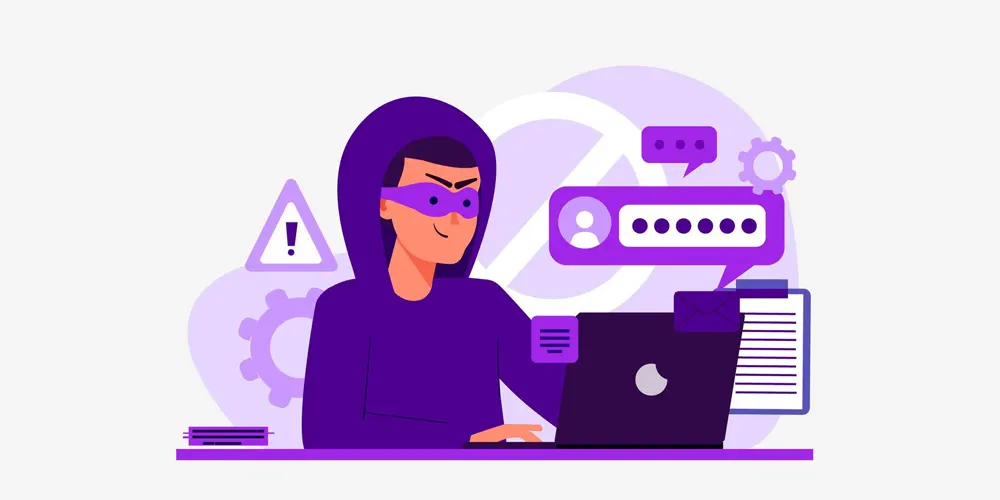Top Challenges for Carriers in Identifying and Curbing Illegal Robocall Traffic from Upstream Carriers
Illegal robocalls continue to plague the telecom industry, frustrating consumers and burdening carriers worldwide.
Despite advancements in technology, stopping these bad actors remains a daunting task. Especially when dealing with upstream carriers that exploit loopholes in the system.
From misusing STIR/SHAKEN attestation to blending malicious traffic with legitimate calls. Upstream carriers often make it nearly impossible for downstream carriers to detect and curb this unwanted traffic.
In this blog, we’ll explore the top challenges carriers face in identifying and mitigating illegal robocall traffic from upstream carriers.
We’ll delve into the complexities of the VoIP ecosystem, the deceptive tactics employed by upstream carriers, and the limitations of current solutions like STIR/SHAKEN and Robocall Mitigation Database (RMD).
Additionally, we’ll discuss how resource constraints leave many carriers vulnerable to these sophisticated schemes.
Whether you're a carrier striving to protect your network or an industry professional looking to understand the ongoing battle against illegal robocalls, this blog will provide insights into the obstacles standing in the way of a robocall-free future.
The Complex VoIP Ecosystem: A Maze for Robocall Tracing

Each VoIP Carrier’s Network is an intricate and unique one. There are multiple servers, both signals and sometimes media, managing traffic. There are interconnections with other carriers, both upstream and downstream.
In most scenarios, it takes multiple carriers coming together to deliver a call from its origin to destination. Such an inherently complex ecosystem makes it challenging to trace back illegal robocalls to its origins.
Key Factors Contributing to Complexity:
1. Multiple Carriers and Networks
As discussed earlier, each carrier operates its network in a unique manner. This means every carrier has distinct hardware, software, routing protocols and more. Now add to it the multiple carrier interconnects with their own added complexities.
2. Service Providers and Resellers
VoIP service providers cater to the communication needs of a diverse set of clients. This includes residential, commercial and wholesale clients. Then there are also resellers who propagate the same services to a different set of clients altogether.
The result? A complex multi-layered distribution channel. Moreover, many providers and resellers maintain customer anonymity making it difficult to identify the source of robocalls.
3. Spoofing and Masking
Robocallers are masters of deception, using clever tricks to hide their identities. They can easily manipulate caller ID information, making it appear as though they're calling from a local number or even a trusted authority.
But that's not all. They can also mask their IP addresses, making it nearly impossible to pinpoint their true location. It's like playing a game of hide-and-seek with someone who knows all the best hiding spots.
Technical Challenges in Tracing Robocall Traffic
Multiple Hops: A robocall can traverse multiple networks and service providers before reaching its destination, making it difficult to pinpoint the original source.
Dynamic Routing: Network traffic is often routed dynamically based on factors like load and congestion, making it challenging to predict the path a robocall will take.
International Traffic: Robocalls originating from overseas networks can be even more difficult to trace due to jurisdictional challenges and language barriers.
Spoofing and Masking: The ability of robocallers to spoof caller ID and mask their IP addresses further hinders tracing efforts.
All such factors together make it difficult to traceback illegal robocalls.
Upstream Carriers Misusing STIR/SHAKEN Level-C Attestation

Upstream carriers, those that originate calls, can exploit the STIR/SHAKEN protocol by consistently attesting all inbound international calls with a Level C attestation.
This tactic can make it difficult for downstream carriers, those that deliver calls to end-users, to effectively eliminate illegal robocalls.
Here's how:
- Passing the Buck: Level-C attestation indicates that the call's origin has been verified by the downstream carrier but not by the upstream carrier.
By consistently using Level-C attestation, upstream carriers can essentially shift the responsibility for verifying the call's authenticity onto the downstream carrier.
- Overburdening Downstream Carriers: Downstream carriers must invest resources to verify the legitimacy of each Level-C attested call, which can be time-consuming and costly.
- Difficulty in Tracing Origin: When upstream carriers consistently use Level-C attestations, it becomes more challenging for downstream carriers to trace the origin of robocalls. This can make it difficult to take action against the responsible party.
- *Exploiting Regulatory Gaps: In some cases, the rules governing STIR/SHAKEN may not be clear or enforceable when it comes to international calls. This can create opportunities for bad actors to exploit the system.
- Overwhelming Volume: The sheer volume of international calls can make it difficult for downstream carriers to thoroughly investigate each one. This can increase the likelihood of illegal robocalls slipping through the cracks.
By these tactics, upstream carriers can create a smokescreen that makes it difficult for downstream carriers to effectively eliminate illegal robocalls. This can lead to increased frustration for consumers and a loss of trust in telecommunications providers.
Bad Actors Using Mixed Traffic to Circumvent STIR/SHAKEN and RMD

Upstream carriers, those that originate calls, can use a tactic known as "mixed traffic" to circumvent STIR/SHAKEN and the Robocall Mitigation Database (RMD).
This involves intermingling a small amount of illegal robocall traffic with legitimate traffic originating from their upstream providers.
Here's how this tactic works.
1. Blending Robocalls: Bad actors inject illegal robocalls into the legitimate traffic stream, making it difficult to distinguish between the two.
2. Exploiting Statistical Anomalies: By carefully controlling the ratio of legitimate to illegal calls, bad actors can avoid triggering statistical anomalies that might raise red flags.
3. Evading RMD: The mixed traffic can make it more difficult for the RMD to identify and block the illegal robocalls, as the legitimate traffic can mask their presence.
4. Leveraging Legitimate Traffic: The legitimate traffic can provide a shield of protection, making it harder to trace the source of the illegal robocalls.
By using this tactic, bad actors can effectively hide their illegal robocall activities, making it more difficult for carriers and regulators to detect and stop them.
This can lead to increased frustration for consumers and a loss of trust in telecommunications providers.
Resource Constraints in Combating Illegal Robocalls

The profit margins in VoIP have consistently been going down since a few years. Unsurprisingly, implementing safety nets to avoid paying high fines imposed by the FCC has become a challenge.
High Cost of Implementation
Imagine combating a relentless wave of robocalls. It's like fighting a digital hydra, where one head is barely chopped off before two more grow in its place. To effectively battle this menace, carriers need to equip themselves with powerful tools.
To combat such a threat, a carrier would need technologies such as machine learning and artificial intelligence. Such tools can monitor the traffic and look for suspicious patterns or calls and flag them.
While effective, these tools come at a cost. There’s the hardware side of things, the technology itself and the people required to set up and oversee these operations.
Not all carriers have deep pockets and resources to spare to dedicate to such costly safety nets.
Combating Evasive Tactics
We’ve already glanced at all the technologies and techniques bad actors in telecom employ to propagate illegal robocalls. Adding to the woes is the constantly evolving strategies these operators use.
Consider a carrier with dozens of interconnections, running a varying composition of traffic. An upstream carrier can mix 70% of legitimate traffic with 30% illegal robocalls and get away with it.
It will take a lot of resources to deploy systems that can accurately identify illegal robocalls amidst a mix of legitimate traffic.
False Positives

Imagine getting a guard dog to protect your business’s store front. You expect it to keep our burglars but now the dog is also barking at regular customers and scaring them away. Sounds counter intuitive right?
Many robocall detection systems use pattern recognition and analyze signaling to determine if a particular call is a robocall or not. The problem lies here. The accuracy of such methods is questionable.
Illegal Robocalls can be tweaked to mimic the characteristics of regular traffic as well. Thus, there aren't any concrete identifiers to single out robocalls.
As a result, in many instances, such systems report false positives. This can create more problems than it solves. Such false positives can strain customer relationships.
Protect Your Network with ConnexCS Call Content Analyzer: The Smart, Cost-Effective Solution

Say goodbye to spam and scam traffic with ConnexCS's Call Content Analyzer, a powerful and affordable tool designed to safeguard your network.
Unlike traditional methods relying on STIR/SHAKEN or call attestation, our innovative solution analyzes the actual content of calls for unmatched security.
How Does It Work?
ConnexCS Call Content Analyzer automatically identifies keywords and phrases often used in spam and scam calls. When suspicious content is detected, the system instantly alerts you, giving you the power to take action.
Whether it's issuing warnings, suspending traffic, blocking accounts, or reporting incidents to authorities, you stay in control.
Key Features:
Real-Time Detection: Our analyzer detects spam and scam keywords in real time, helping you respond swiftly.
Flexible Control: Choose how to handle flagged calls—manually or automatically, so you can focus on your core business.
Unbeatable Value: At just $500 per month, ConnexCS offers robust protection at a fraction of the cost of other so-called "AI-powered" solutions.
Coming Soon: Sentiment Analysis!
We’re expanding this feature to include sentiment analysis, allowing you to gather customer feedback directly from call content without the need for surveys or questionnaires.
Why Choose ConnexCS?
Automated Protection: Fully automate your response to suspicious calls, ensuring your network stays secure 24/7.
Affordable Pricing: Enjoy enterprise-grade protection without the hefty price tag.
Future-Ready Features: Stay ahead with upcoming enhancements like sentiment analysis, designed to add even more value to your business.
Don’t let spam and scam traffic disrupt your business. Secure your network and protect your reputation with ConnexCS's Call Content Analyzer. Take control today and experience peace of mind like never before!
























































































































